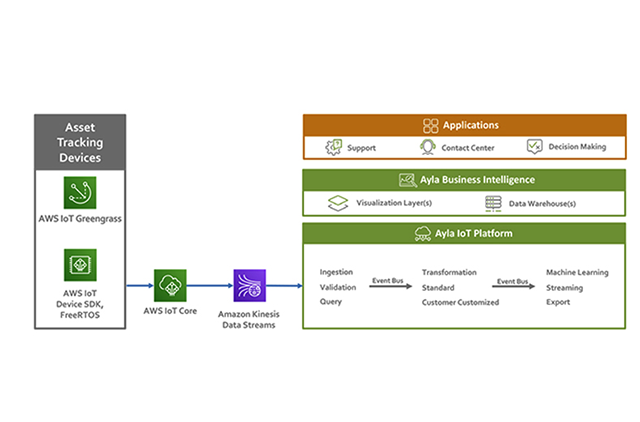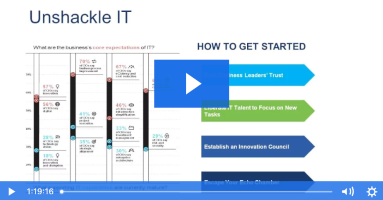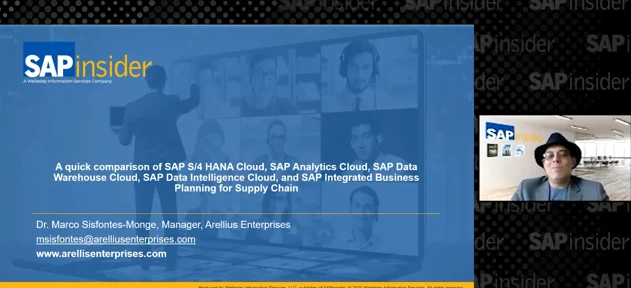There is no doubt that cloud infrastructure will redefine how organizations build their technology capabilities and how they innovate. This has emerged as a consistent theme in our research and conversations with the SAPinsider community. Our research reports like Future of Business Intelligence, Analytics in The Cloud, Modernizing Logistics and Inventory Tracking, and Supply Chain Planning in The Cloud all highlight the increasing adoption of cloud-based offerings. As the market expands, so does the revenue generated by the key players. The market will keep seeing this rapid expansion for the next decade. But then, I expect it to mature and slow down. However, there is an opportunity for the key players to build new markets and categories, using their experience between now and then. But what are the essential ingredients to build dominance in the cloud market?
Ingredients for Cloud Market Dominance
If your vision of the cloud revolves around infrastructure, then there is a need to rethink from a long-term viability perspective. While the market is expanding because of demand, infrastructure is a commodity. If you build expertise focused on this and this aspect alone, things will become difficult a decade from now. In my mind, the three key ingredients to building a long-term cloud market dominance are:
Solutions: In
this article discussing the recent news about Google discontinuing IoT Core, I shared an illustration, reproduced below, that shows the architecture of IoT-based solutions from three hyper-scalers. As you can see, if you consider the technical architecture alone, there is not much differentiation between the three. What does or can differentiate lies in the components on the right. The BI, Analytics, AI, and ML tools that leverage the data are the aspects that can differentiate these solutions.
Figure 1: Example architectures for IoT solutions from the top three hyper-scalers
GCP

Source:https://cloud.google.com/iot-core/
AWS

Source: https://aws.amazon.com/architecture/reference-architecture-diagrams/
Azure

Source: https://docs.microsoft.com/en-us/azure/architecture/solution-ideas/articles/condition-monitoring
Suppose we design an architecture for capturing asset data from oil and gas infrastructure that feeds into an ML platform, except for the names of the components. In that case, the architecture will not be drastically different. What can help differentiate one hyper-scale from the other is if they offer a solution that can help you leverage your data in innovative ways. That innovation will come from the ability to explore a plethora of use cases. And this takes us to the second S of scale.
Scale: The ability to experiment more and more in the real world comes with the scale- the opportunities that a hyper-scaler gains by gaining new clients. This is how and why the top management consulting companies, specifically the MBBs assert dominance in strategy consulting. Through their thousands of engagements, they have seen, explored, and solved it all. And the scale has a momentum effect. From the perspective of building this knowledge capability, the larger you become, the faster you learn and build new expertise. Hence, it is extremely critical for cloud offering companies to scale quickly. Even if it is initially in terms of IaaS offerings, the goal should be to get a rich portfolio of clients across industries you can then collaborate with to experiment.
Speed: Scale needs to be combined with speed. A bane of technology-related innovation today is the extremely low shelf-life before the innovation becomes a commodity. But if you combine scale with speed, it can allow you to extend the shelf-life of your innovation. The cycle of scale and speed can give you an edge that competition will take time to catch up with. If you can develop a solution fast, leveraging the scale, and if your speed of scaling persists, it means you not only get to mature your solution faster through use cases but also create niche use cases across industries that, again, add to your speed of scale through good marketing efforts. By carefully syncing speed, scale, and solutions, you can build a momentum engine supported by other critical capabilities like marketing that can always keep you ahead of the game.












